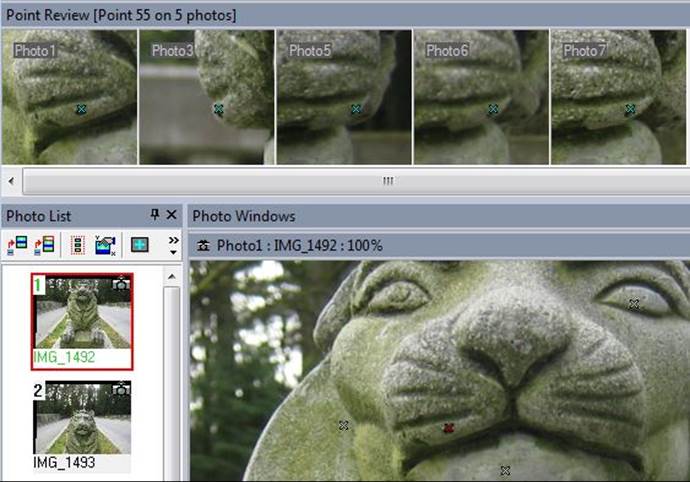

• When taking photographs (or video) for a SmartPoints project photos must be taken with suitable overlap and no gaps. Do not stand still and take photos while pivoting in one location - move along the object/scene and take photos so that the photos are taken side by side or in stereo pairs. In the diagram below, you’ll see that photos are taken in a ring around the object such that there is overlap between more that just neighboring camera positions. This shows a project setup for a 360 degree model of a stationary object:

For scenes that do not need a 360 degree model, take the photos in line or an arc around the portion of the object of interest:

• The photos should be taken from positions that are close to each other, and at low angle separations (i.e.. photos 45 degrees apart may not work). The low separation helps ensure that the features detected between photos look ‘similar’ and are reliably matched. This configuration also helps if you intend to use the imagery for DSM Scanning after SmartMatch processing.
Note 1: SmartMatch projects may not work with a stationary camera and the object on a turntable, because the background scene will change relative to the foreground object, and this will confuse the matching algorithms.
Note 2: Photos should generally be taken with a camera calibrated in PhotoModeler. Although photos from an unknown source can be processed (typically if Exif information is included in the photo), processing and orientation will be more robust with a calibrated camera. SmartMatch includes Auto-calibration which can be used to calibrate an uncalibrated camera, or fine tune an already calibrated camera (especially if project focus distance varies significantly from calibration).